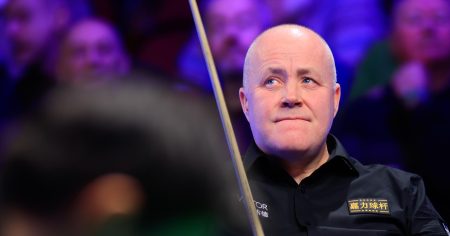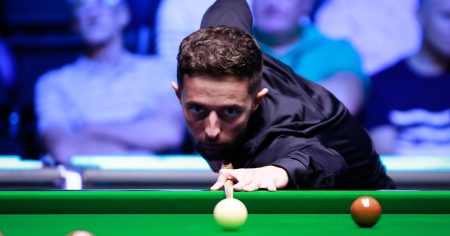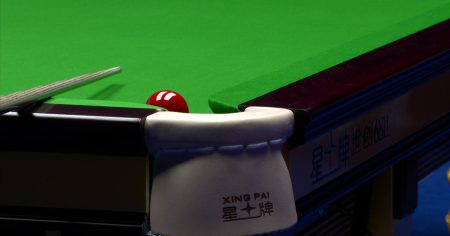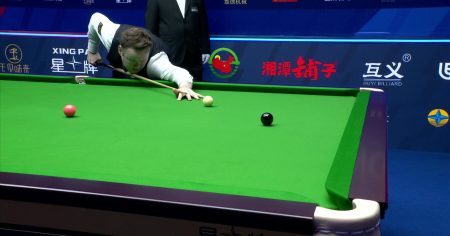The second-round clash at the Australian Open between Arthur Cazaux of France and Great Britain’s Jacob Fearnley unfolded as a compelling narrative of resilience, strategic adaptation, and the unpredictable swings of momentum inherent in grand slam tennis. Initially, Cazaux appeared to be in command, dictating play with his aggressive baseline strokes and exploiting Fearnley’s seemingly tentative approach. The Frenchman’s powerful forehand was a consistent weapon, finding corners and pushing Fearnley deep behind the baseline, effectively neutralizing the Brit’s attempts to construct points. Cazaux’s serve, while not overwhelmingly powerful, was strategically placed and often followed by a forceful forehand that left Fearnley scrambling. The first set reflected this dominance, with Cazaux securing an early break and maintaining pressure throughout, leaving Fearnley visibly frustrated and struggling to find his rhythm. This initial ascendancy painted a picture of a potentially swift victory for the Frenchman, leaving the impression of a mismatch in both power and tactical execution.
However, the narrative shifted dramatically as the match progressed. Fearnley, demonstrating the tenacity characteristic of grand slam competitors, began to find his footing. Recognizing the need for a change in tactics, he started to incorporate more variation into his game, introducing drop shots and slices that disrupted Cazaux’s aggressive rhythm. This shift in approach forced Cazaux to move forward more frequently, exposing vulnerabilities in his net game and creating opportunities for Fearnley to capitalize. The Brit also began to find more depth and consistency with his groundstrokes, engaging Cazaux in longer rallies and gradually wresting control of the baseline exchanges. The increased pressure began to tell on Cazaux, whose unforced error count began to rise as Fearnley’s confidence grew. This tactical adjustment proved crucial, turning the tide of the match and setting the stage for a remarkable comeback.
The second set witnessed a complete reversal of fortunes. Fearnley’s newfound confidence radiated through his game, his shots carrying greater conviction and his movement around the court becoming more fluid and decisive. He seized opportunities to dictate rallies, forcing errors from Cazaux and securing crucial breaks of serve. Cazaux, visibly shaken by the shift in momentum, struggled to regain the dominance he had displayed in the opening set. His attempts to regain control with aggressive play often resulted in unforced errors, further fueling Fearnley’s resurgence. The Frenchman’s body language betrayed his mounting frustration as Fearnley levelled the match, leaving the outcome hanging precariously in the balance.
The deciding set became a tense and closely contested affair, a testament to the resilience of both players. Each game became a battleground, with long rallies testing the physical and mental fortitude of both competitors. Fearnley, riding the wave of his second-set resurgence, continued to press his advantage, utilizing his improved consistency and tactical acumen to keep Cazaux on the defensive. The Frenchman, despite showing glimpses of his earlier form, struggled to maintain consistency, his frustration evident in his increasingly erratic shot selection. Key moments arose where both players faced break points, each point carrying the weight of the match’s outcome. It was Fearnley who ultimately demonstrated greater composure under pressure, converting crucial break points and solidifying his grip on the match.
As the final set reached its climax, the contrast in the players’ demeanour was stark. Fearnley, energized by the prospect of victory, exuded confidence and determination. His shots landed with increasing accuracy, punctuated by fist pumps and roars of encouragement. Cazaux, on the other hand, appeared resigned to his fate, his body language conveying a sense of defeat. The final game was a microcosm of the match’s narrative, Fearnley’s relentless pressure finally breaking Cazaux’s resistance, sealing a hard-fought and well-deserved victory. The Brit’s comeback was a testament to his mental fortitude and adaptability, showcasing his ability to adjust his tactics and seize control of a match that seemed to be slipping away.
The match between Cazaux and Fearnley highlighted the unpredictable nature of grand slam tennis and the importance of mental resilience. Fearnley’s ability to adapt his game plan mid-match, coupled with his unwavering belief in his own abilities, ultimately proved the difference. While Cazaux’s initial dominance showcased his undeniable talent, it was Fearnley’s tenacity and strategic adjustments that earned him the victory, reminding viewers that in the world of professional tennis, momentum can shift dramatically, and matches are often won not just on skill, but on the strength of character and the ability to adapt under pressure. For those who missed this captivating contest, replays are available for streaming on discovery+, offering a chance to witness firsthand this compelling display of athleticism and mental fortitude.














